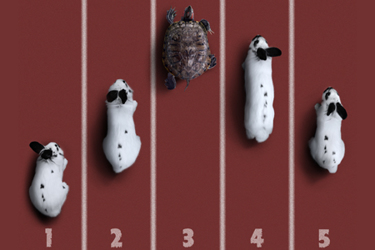Lightning-Fast CMC Meets Incremental Innovation in Cell & Gene Therapy Manufacturing

By Anna Rose Welch, Editorial & Community Director, Advancing RNA

I’ve heard it said that cell and gene therapy companies shouldn’t “let the perfect be the enemy of the good.” Though I fail to remember who to credit for this meaningful (and eloquent!) quote, my conversation with Wugen’s VP of CMC, Ken Chrobak, was a fantastic example of how such a best practice can be translated into an actual CGT manufacturing program. As we tackled the challenging “small fires” and exciting opportunities that can simultaneously arise in establishing and outsourcing an allogeneic cell therapy program, Chrobak continued to emphasize the importance of incremental improvement.
“Figure out your team’s highest priority and don’t outwit yourself,” he wisely offered. “It can be tempting to jump ahead too many steps and lock yourself in one direction too soon rather than take what works and continue to make incremental improvements to your manufacturing process along the way.”
Like many of you, Chrobak entered the CGT space with a background in the biologics realm. While the parallels between the early days of the mAbs space and the current CGT world are well documented, they remain apples and oranges from a maturity standpoint. When Chrobak began to work on an allogeneic CAR-T product, the antibody space was in the midst of a raw material revolution. Animal-derived raw materials were on their way out, and there was greater urgency to use chemically derived raw materials.
Introducing animal-origin-free raw materials into a cell therapy program is certainly possible — and, indeed, may ultimately be the FDA’s preference upon reaching later-stage development. However, Chrobak admitted that, just like the non-vegetarian foodies among us, sometimes, cells are just happier after eating a steak. Though the end-goal may be to move away from these animal-derived raw materials, to make such a move early in development can make a young biotech feel as though it’s on unstable footing.
“If you try to jump ahead too many steps rather than take what works and make incremental changes, you may end up struggling to achieve the desirable cell proliferation or viability you need in the long-run,” he added.
I often ask folks what advice they’d give themselves if they could go back in time to their CGT initiation, knowing what they know now. (Shout-out to my colleague Erin Harris of Cell & Gene for allowing me to steal this gem of a question.)
For Chrobak, companies should always be surveying the field and plotting out how and when to advance their manufacturing platforms. It goes without saying, that time will always be of the essence. But “rapid” innovation is a bit of a misnomer; this is a data-driven industry, after all, and obtaining the appropriate types and amounts of data to understand and reinforce making a change is as much an exercise in patience as it is nimbleness.
“Don’t make a change before you’ve gained all the data demonstrating you can make that change,” Chrobak offered.
The pace of advancement will also, inevitably, depend on the company’s overarching goals and resources. For larger companies with broad pipelines, several commercialized products, and greater financial resources, a program’s immediate success or failure won’t necessarily (generally speaking) make or break a company financially. However, for a small biotech, demonstrating a product’s clinical success as early as possible is the portal to greater name recognition, investor attention, additional funding, and talent acquisition and retention — all of which are essential to getting patients the therapies and, ideally, the cures they need.
This is why Chrobak emphasizes incremental innovation, especially for those who, like Wugen, are striving to be one of the first allogeneic companies to market. “It’s great to be the first, but there are challenges in being the first — and one of those challenges is determining which of the many small manufacturing details you must prioritize,” he concluded. “Do you want to be the first that gets into the clinic that has a decent amount of product? Or do you want to be the first that has implemented a specific advancement that will be valuable in three years — but may not be essential to get the treatment to patients in the clinic?”
Liked what you read here? Be sure to check out the other parts of this article series:
Part 1: Autologous Cell Therapy Learnings Illuminate Path To Allogeneic Manufacturing Platforms
Part 2: Zen & The Art Of Allogeneic NK Cell Therapy Manufacturing
Part 3: Beyond Cell Expansion: Building A Commercial CGT Manufacturing Framework
